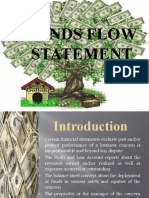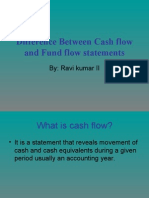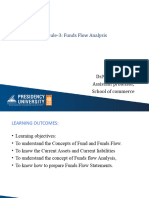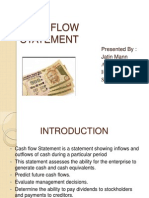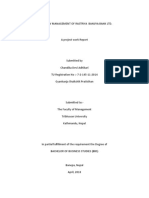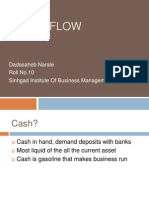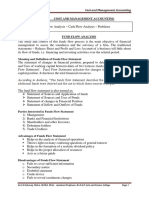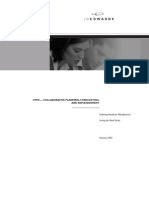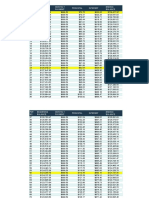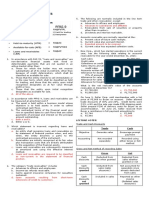100% found this document useful (1 vote)
308 views19 pagesStatement of Changes in Financial Position
The document discusses the importance of the statement of changes in financial position, also known as the fund flow statement or cash flow statement. It provides 3 key pieces of information - the financial position of the firm at a point in time via the balance sheet, the firm's financial performance over a period via the income statement, and the sources and uses of cash/funds over a period via the fund flow/cash flow statement. The fund flow statement analyzes changes in working capital between two balance sheet dates to understand where funds came from and how they were applied, while the cash flow statement specifically tracks cash inflows and outflows.
Uploaded by
ankitkhanijoCopyright
© Attribution Non-Commercial (BY-NC)
We take content rights seriously. If you suspect this is your content, claim it here.
Available Formats
Download as PPT, PDF, TXT or read online on Scribd
100% found this document useful (1 vote)
308 views19 pagesStatement of Changes in Financial Position
The document discusses the importance of the statement of changes in financial position, also known as the fund flow statement or cash flow statement. It provides 3 key pieces of information - the financial position of the firm at a point in time via the balance sheet, the firm's financial performance over a period via the income statement, and the sources and uses of cash/funds over a period via the fund flow/cash flow statement. The fund flow statement analyzes changes in working capital between two balance sheet dates to understand where funds came from and how they were applied, while the cash flow statement specifically tracks cash inflows and outflows.
Uploaded by
ankitkhanijoCopyright
© Attribution Non-Commercial (BY-NC)
We take content rights seriously. If you suspect this is your content, claim it here.
Available Formats
Download as PPT, PDF, TXT or read online on Scribd
/ 19










